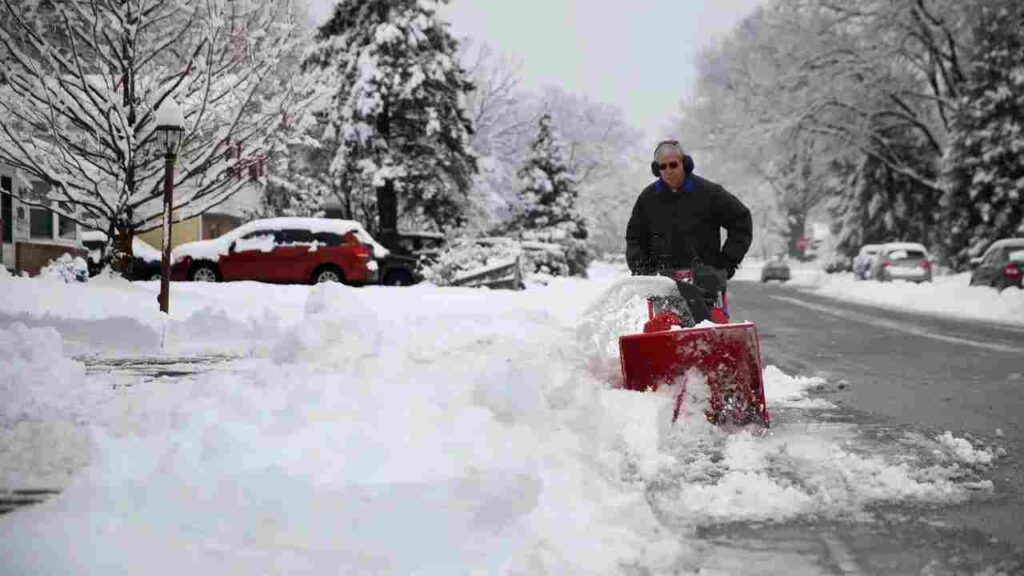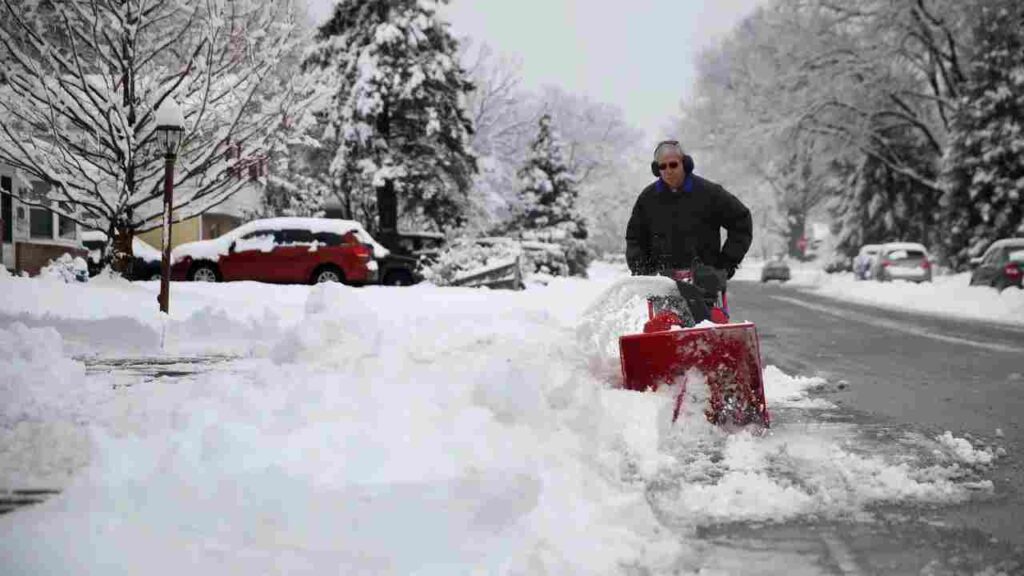Dealing with snow on your driveway can be a real hassle during winter, but having the right strategies and tools can make all the difference. Whether you’re facing a light dusting or a heavy snowfall, removing snow efficiently is key to keeping your driveway safe and accessible. From shovels and snow blowers to more advanced solutions like heated driveways, there are various methods to consider based on the amount of snow and your specific needs. In this guide and with the help of Liberty Heritage Nursery Farm, we’ll explore the best ways to clear snow from your driveway, so you can stay prepared and keep your path clear all winter long.

Additionally, applying de-icing products can help prevent ice build-up and make snow removal easier. These products work by melting existing ice and preventing new layers from forming, making it easier to clear snow. Driveway services can also assist with effective snow and ice management, providing professional solutions to keep your driveway safe and accessible. Regular application before and after snowfalls can significantly reduce the amount of ice that accumulates.
Manual Snow Removal: Shovels and Tools
Manual snow removal is a straightforward and effective way to clear your driveway, especially for light to moderate snowfalls. Shovels are the most common tool, with options ranging from traditional metal shovels to ergonomic designs that reduce strain on your back. For larger areas, a snow scoop or pusher can help move snow more efficiently. When clearing asphalt driveways, it’s important to use plastic or non-metal shovels to avoid damaging the surface. Regular maintenance of the asphalt, including sealing cracks and applying a protective sealant, can also enhance durability and prevent damage from snow and ice. Using the right tool can make a big difference—consider a shovel with a reinforced edge for cutting through ice or one with a large scoop for handling more snow.
Using Snow Blowers: Types and Benefits
Snow blowers offer a powerful solution for clearing larger amounts of snow quickly. They come in various types, including single-stage and two-stage models. Single-stage snow blowers are generally suitable for lighter snow and small to medium driveways, as they scoop and discharge snow in one pass. Two-stage snow blowers are more powerful and can handle heavy snow and ice, using an auger to break up snow and a blower to expel it. Some models also offer features like heated handles and electric starters for added convenience. Investing in a snow blower can save time and effort, especially in areas with frequent or heavy snowfalls, and provide a more thorough clean than manual methods.
Heated Driveways: Installation and Efficiency
Heated driveways are an innovative solution for managing snow and ice. They work by embedding electric or hydronic heating elements beneath the driveway surface, which melt snow and ice as it falls. Installation involves laying heating cables or pipes before pouring concrete or installing pavers, which can be more complex and costly compared to traditional methods. However, the efficiency of heated driveways is notable—once installed, they can significantly reduce snow removal efforts and keep your driveway consistently clear. They are ideal for areas with frequent snow and ice, providing a convenient, automated way to maintain a clear and safe driveway throughout the winter season.
Snow Plows: Residential and Commercial Options
Snow plows are an effective option for clearing large driveways or commercial properties. Residential snow plows are typically smaller and can be attached to trucks or even some ATVs, designed to handle moderate to heavy snow. They work by pushing snow to the side of the driveway or onto adjacent areas. Commercial snow plows are larger and more robust, often mounted on trucks or tractors, capable of clearing extensive areas quickly. These plows are ideal for businesses or large properties with frequent snow accumulation. Whether residential or commercial, choosing the right size and type of plow based on your needs can improve snow removal efficiency and reduce the time spent clearing snow.
De-Icing Products: Types and Applications
De-icing products are essential for preventing ice build-up and making snow removal easier. Common types include rock salt, calcium chloride, and magnesium chloride. Rock salt is effective and cost-efficient but can be harsh on concrete and vegetation. Calcium chloride and magnesium chloride work at lower temperatures and are less damaging, but they are more expensive. Applying these products before snowfalls can prevent ice from forming, and using them after a snowfall can help break down existing ice. It’s important to follow application guidelines and consider environmental impacts, as excessive use of de-icers can harm plants and waterways. Proper application helps maintain a clear, safe driveway throughout the winter.
Salt vs. Sand: Choosing the Right Ice Melt
When choosing between salt and sand for managing ice on your driveway, consider their different effects and benefits. Salt, such as rock salt or calcium chloride, is effective at melting ice but can be harsh on concrete and potentially damaging to surrounding vegetation. It works quickly to lower the freezing point of water, making it ideal for fast ice removal. Sand, on the other hand, does not melt ice but provides traction to prevent slipping. It’s a good option for adding grip to icy surfaces without chemical damage, though it requires additional effort to remove. Often, a combination of salt for melting and sand for traction is used to manage winter conditions effectively.
Snow Removal Techniques for Large Driveways
For large driveways, efficient snow removal techniques are essential to handle significant snowfall effectively. Using a snow blower can cover large areas quickly, but it’s important to ensure it has sufficient capacity for the snow depth. Combining snow blowers with plows or shovels can help clear snow more comprehensively, especially in tighter or more intricate areas. Additionally, consider creating a snow storage plan to avoid piling snow in inconvenient locations. Proper technique involves pushing snow away from the driveway and stacking it in designated areas, while ensuring not to block access points or sidewalks. Regular removal and strategic clearing can help manage heavy snowfalls and maintain a clear and safe driveway.

Safety Tips for Snow Shoveling and Snow Blowing
Safety is crucial when shoveling or snow blowing to prevent injury and ensure effective snow removal. For shoveling, use a shovel with a proper ergonomic handle to reduce back strain and employ correct lifting techniques—bend your knees, not your back, and avoid lifting heavy loads. Take frequent breaks to avoid overexertion. When using a snow blower, follow the manufacturer’s safety guidelines, including wearing protective gear and avoiding standing in front of the machine while it’s running. Clear the snow blower’s chute if it becomes clogged only after turning off the machine. Proper maintenance of equipment and adherence to safety practices can prevent accidents and ensure a safer snow removal process.
Preventative Measures to Reduce Snow and Ice Build-Up
Preventative measures can significantly reduce snow and ice build-up, making winter maintenance easier. Start by applying de-icing products before snowfall to prevent ice from forming. Regularly clearing snow as it accumulates reduces the chance of ice forming underneath. Keeping your driveway well-drained can also prevent water from pooling and freezing. Installing a heated driveway system can automate snow removal and keep surfaces clear. Additionally, consider using snow barriers or shields to direct snow away from critical areas. Implementing these measures proactively will minimize the amount of snow and ice that accumulates, making the overall snow removal process more manageable and reducing the risk of hazardous conditions.
Maintaining Your Snow Removal Equipment
Proper maintenance of your snow removal equipment is essential for ensuring reliable performance and longevity. For snow blowers, regularly check and change the oil, clean or replace the air filter, and inspect the spark plug. Keep the auger and impeller free of debris and ensure the machine is stored in a dry place during off-seasons. For shovels and plows, inspect for any damage or wear and repair or replace parts as needed. Regular maintenance helps prevent breakdowns during critical times and ensures that equipment operates efficiently. Following the manufacturer’s maintenance guidelines and addressing issues promptly will help keep your snow removal tools in top condition throughout the winter season.
Professional Snow Removal Services: What to Expect
Professional snow removal services offer a comprehensive solution for managing snow and ice, particularly for larger properties or commercial spaces. When hiring a service, expect a range of options including regular snow plowing, salting, and de-icing. Professionals use specialized equipment and techniques to handle heavy snowfall and ensure prompt removal. Services often include pre-storm preparation and post-storm clearing, tailored to your property’s specific needs. Discussing your requirements and expectations with the service provider will help ensure that they meet your needs effectively. Professional services can save you time and effort, providing peace of mind that your driveway and property will remain accessible and safe throughout the winter.
Conclusion
In conclusion, managing snow on your driveway effectively involves a combination of methods and tools tailored to your needs. Whether using manual shovels, snow blowers, or heated driveways, each approach offers unique benefits depending on the amount of snow and your property’s size. Incorporating de-icing products and choosing the right ice melt can prevent hazardous conditions and ease snow removal. Additionally, proper maintenance of your equipment and employing professional snow removal services when necessary ensures efficient operation and safety. By considering these strategies and implementing preventative measures, you can maintain a clear, accessible driveway throughout the winter, reducing the risk of accidents and preserving the functionality and safety of your property.
FAQs
What is the best tool for clearing light snow from a driveway?
For light snow, a shovel or a small snow blower is typically sufficient. Shovels are ideal for quick, manual clearing, while small snow blowers can handle slightly more snow efficiently.
How do heated driveways work, and are they worth the investment?
Heated driveways use electric cables or hot water pipes beneath the surface to melt snow and ice. They are effective and convenient but involve higher installation costs.
What are the benefits of using de-icing products?
De-icing products prevent ice build-up and make snow removal easier. They help keep surfaces safe by melting existing ice and preventing new layers from forming.
How often should I maintain my snow removal equipment?
Regular maintenance, such as checking oil, cleaning filters, and inspecting parts, should be done before each winter season. This ensures reliable performance and extends the equipment’s lifespan.
When should I consider hiring professional snow removal services?
Professional services are ideal for large driveways or commercial properties with heavy snowfall. They provide expertise and equipment for efficient and thorough snow and ice management.
